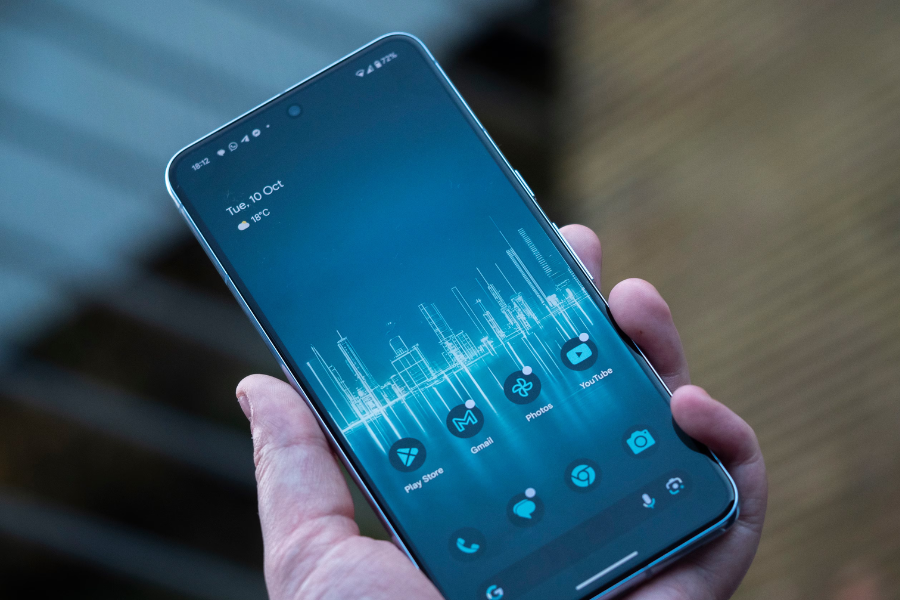If you own a Sonim device, keeping your phone up to date with the latest software is crucial for performance, security, and bug fixes. While most people rely on over-the-air (OTA) updates, there are times when you may need to update manually using ADB (Android Debug Bridge) and Fastboot. These tools give you the flexibility to install updates, fix issues, and even un-brick a device if necessary. In this guide, we’ll walk you through everything you need to know about updating Sonim devices via ADB and Fastboot.
Why Use ADB and Fastboot for Updates?
Updating your device via ADB and Fastboot might sound like a complicated process, but there are a number of good reasons for using these methods over traditional OTA updates.
OTA Updates Fail: Sometimes, OTA updates can fail due to network issues or corrupted files. ADB and Fastboot allow you to sidestep these problems by manually installing the updates.
Custom ROMs and Rooting: If you’ve modified your Sonim device with a custom ROM or have rooted it, you may not receive official OTA updates. In this case, ADB and Fastboot are essential tools for keeping your system up to date.
Fixing Bricked Devices: A bricked device is one that becomes unresponsive, often during an update process. Using ADB or Fastboot can help restore the device to working condition.
Testing Developer Previews: If you’re a developer or an enthusiast, you might want to test pre-release builds. ADB and Fastboot provide the necessary means to install such updates.
What Are ADB and Fastboot?
Before we dive into the update process, let’s quickly discuss what ADB and Fastboot are and how they work.
ADB (Android Debug Bridge): ADB is a versatile command-line tool that allows your computer to communicate with an Android device. It can be used for a variety of tasks, such as installing apps, transferring files, and even pushing or pulling data from the device. ADB is mainly used when the device is running and accessible.
Fastboot: Fastboot is a protocol used to modify the Android file system directly from a computer, especially in bootloader (fastboot) mode. It’s often used for flashing firmware, unlocking bootloaders, and recovering bricked devices. Unlike ADB, which works when the system is running, Fastboot is used for more advanced tasks when the system is in a special mode.
Getting Ready for the Update
Before you update your Sonim device using ADB or Fastboot, there are a few important preparation steps to ensure everything goes smoothly:
1. Backup Your Data
Anytime you perform an update or modification on your device, there’s a risk of data loss. It’s highly recommended that you back up your photos, videos, contacts, and other important data before proceeding. You can use cloud services or a computer to ensure your data is safe.
2. Enable Developer Options and USB Debugging
To interact with your Sonim device using ADB, you’ll need to enable Developer Options and USB Debugging. Here’s how to do that:
- Open the Settings menu.
- Scroll down and tap on About phone.
- Repeatedly tapping the Build number will result in the notification “Developer options enabled.”
Now go back to the main settings menu, and you’ll find a new section called Developer options. In this section, make sure to enable USB Debugging.
3. Unlock the Bootloader (If Needed)
In some cases, such as flashing full firmware, you’ll need to unlock the bootloader. This is a critical step if you’re performing more advanced operations like installing custom ROMs. Keep in mind that unlocking the bootloader will wipe all data on your device.
4. Install the Necessary Drivers
For ADB and Fastboot to work correctly, you need to have the appropriate USB drivers for your Sonim device installed on your computer. These drivers ensure that your computer can detect the device when connected via USB.
5. Install ADB and Fastboot Tools
You’ll need to install ADB and Fastboot tools on your computer. You can download the official Android platform-tools package from the Android developer website. These tools will allow you to send commands to your Sonim device and perform updates.
Updating Your Sonim Device
Once everything is set up, it’s time to update your Sonim device. There are two main methods to update your device: ADB sideload and Fastboot. Let us examine each in more detail.
Method 1: Updating via ADB Sideload
ADB sideload is used when you want to manually install an OTA update. This is usually done by downloading the official update file (in ZIP format) and then installing it using ADB commands.
Download the OTA Update File: You’ll first need to download the correct OTA update file for your Sonim device. This file can typically be found on the official Sonim website or through a trusted source.
Boot into Recovery Mode: To begin the update process, you’ll need to boot your device into recovery mode. This is done by using ADB commands to restart the device in recovery mode.
Sideload the Update: Once your device is in recovery mode, you can initiate the update process using ADB. This involves sideloading the update ZIP file from your computer to the device.
Reboot the Device: Once the update has been installed successfully, your device will automatically reboot, and you’ll be running the latest version of the software.
Method 2: Updating via Fastboot
Fastboot is used for more advanced updates, such as flashing the full firmware or restoring a bricked device. Here’s how to use Fastboot for an update:
Download the Firmware Package: If you want to update your device with a full firmware image (such as a new version of the operating system), you’ll need to download the firmware package for your Sonim device. This package usually includes several different image files (e.g., system.img, boot.img, etc.).
Boot into Fastboot Mode: Once the firmware is downloaded, you’ll need to boot your device into fastboot mode. This is done by using an ADB command to reboot the device into the bootloader.
Flash the Firmware: In fastboot mode, you’ll use Fastboot commands to flash the individual firmware files to the device. This process updates your system to the latest version, and it’s often necessary when performing more complex updates or restoring a bricked device.
Reboot the Device: After all the firmware files have been flashed, you can reboot your device. The update will take effect, and your device should boot up with the new firmware.
Troubleshooting Common Issues
While the update process is generally smooth, there are a few common issues you may encounter:
Device Not Detected: If your Sonim device isn’t recognized by ADB or Fastboot, ensure USB debugging is enabled, and the correct drivers are installed. You may also need to try a different USB cable or port.
Update Fails: If an update fails, double-check that you’ve downloaded the correct update file for your specific Sonim model. Flashing the wrong file can cause issues.
Bootloop: Sometimes after an update, your device might get stuck in a bootloop. If this happens, you may need to wipe the cache or perform a factory reset via recovery mode.
Conclusion
Updating your Sonim device using ADB and Fastboot provides a reliable way to install firmware updates, fix software issues, and restore bricked devices. While OTA updates are the easiest method, ADB and Fastboot offer greater control and flexibility, especially for users who have rooted their device or need to recover from a failed update. By following the steps outlined in this guide—preparing your device, downloading the correct firmware, and using ADB or Fastboot commands—you can ensure a smooth and successful update process. Always remember to back up your data before proceeding and verify that you’re using the correct firmware to avoid potential issues.
FAQs
1. Is it safe to update my Sonim device using ADB and Fastboot?
Yes, as long as you follow the correct steps and use the right firmware for your device, updating via ADB and Fastboot is safe. However, flashing incorrect files or interrupting the process can lead to issues.
2. What should I do if my device is not detected by ADB or Fastboot?
Make sure USB debugging is enabled, the proper drivers are installed, and you’re using a working USB cable. Restarting both your computer and phone can also help resolve detection issues.
3. Can I use ADB and Fastboot on any Sonim device?
Most Sonim devices support ADB and Fastboot, but some models may have restrictions. Check your device’s documentation or support forums to confirm compatibility.
4. What happens if my device gets stuck in a bootloop after an update?
If your Sonim device is stuck in a bootloop, try wiping the cache or performing a factory reset in recovery mode. If the problem persists, reflash the firmware using Fastboot.
5. Do I need to unlock the bootloader to update via ADB or Fastboot?
It depends on the type of update. For OTA sideload updates, you don’t need to unlock the bootloader. However, for flashing full firmware images via Fastboot, unlocking the bootloader may be required.





